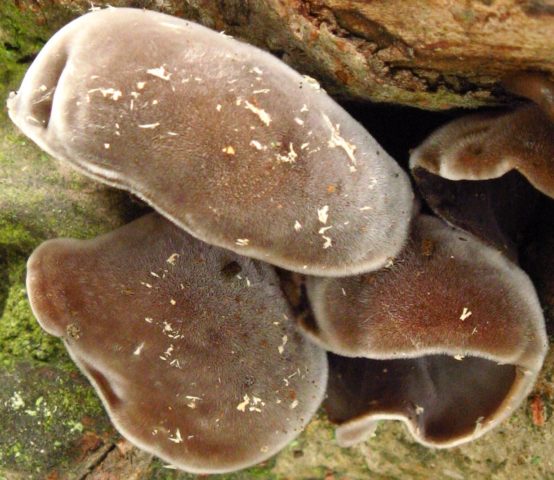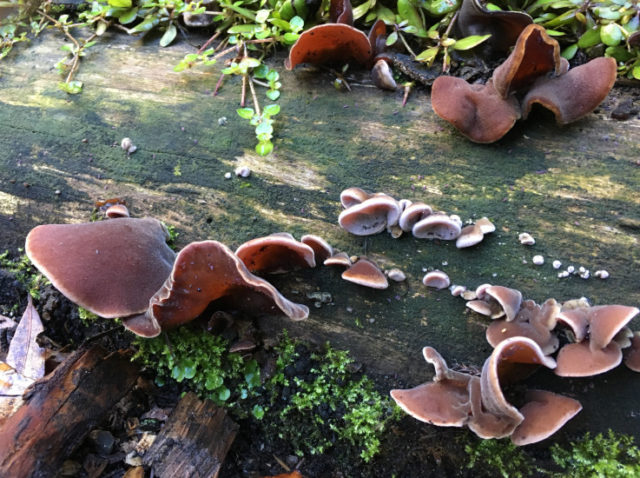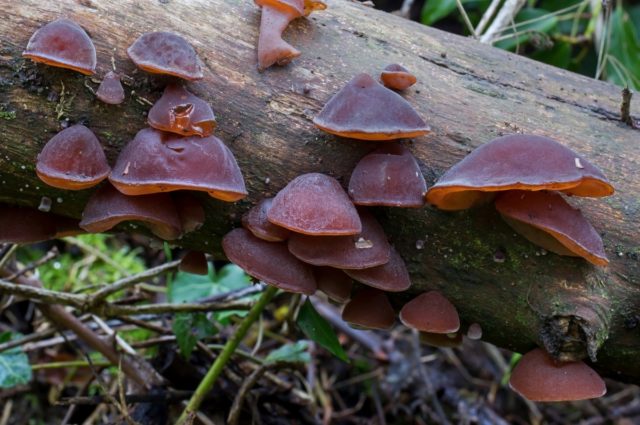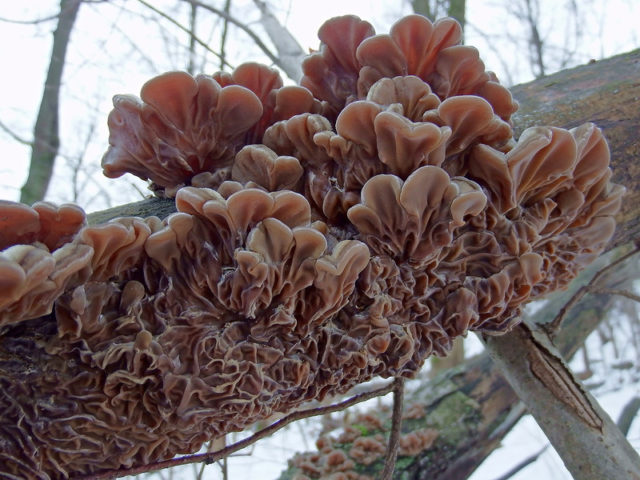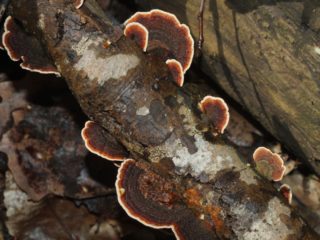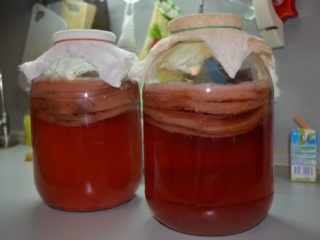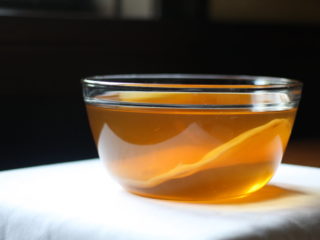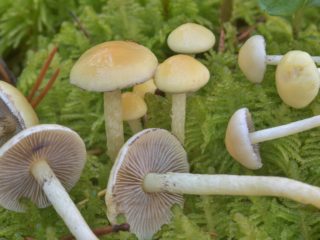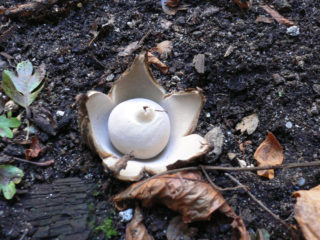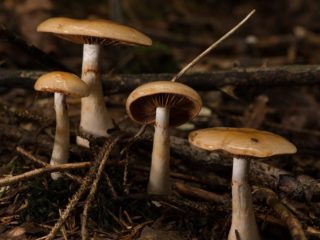Content
Auricularia densely hairy is a characteristic representative of tree fungi of the Auriculariaceae family, the fruiting bodies of which resemble an ear. Because of this similarity, there are local definitions - woody, or Judas's ear. Among mycologists, mushrooms are known as Auricula, or Exidia, or Hirneola, polytricha, Auricularia auricula-judae. Sometimes the name “forest meat” is popular for the densely hairy fruiting bodies due to their high nutritional value.
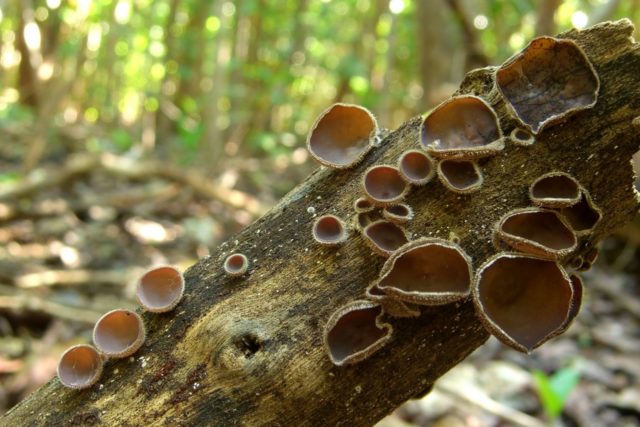
Auricularia densely hairy prefers to grow on tree trunks
Where does Auricularia foliosa grow?
The species is distributed in the tropics and subtropics - Southeast Asia, North and South America.In Russia, auricularia densely hairy is found in the Far East. Conditionally edible tree ear-shaped mushrooms of other species are common in Russian forests. The densely hairy variety prefers to settle in warm and humid climates on the bark of broad-leaved trees, especially oaks, and on old or fallen wood. Fruiting bodies are found from late spring to October. Auricularia has long been cultivated in China, Thailand, Vietnam, and Japan, using elm, maple, elderberry wood, sawdust, rice husks, and straw as a substrate. An ear-shaped species from China called Muer, or Black Fungus, is exported throughout the world. Auricularia foliosa is also grown in different countries.
What does auricularia densely hairy look like?
The sessile fruiting bodies of the species are large:
- diameter up to 14 cm;
- height up to 8-9 cm;
- cap thickness up to 2 mm;
- the leg is completely invisible, sometimes absent.
The hat is funnel-shaped or ear-shaped in shape, the color is gray-brown - from yellow-olive to dark brown. The surface is densely covered with brown hairs, up to 600 microns in height, which is why from a distance the mushroom appears as a plush formation. The inner surface may be purple or gray-red. After drying it becomes dark, almost black.
The cartilaginous pulp is gel-like, brown in young specimens, dry and dark in adults. During the dry period, the mushroom body decreases, and after rains it returns to its original volume and soft consistency. After drying, the pulp is hard, almost horny. Spore powder is white. Mushrooms produce many spores that are carried by the wind. The fruiting body develops over 70-80 days. Fruits in one place for 5-7 years.
Is it possible to eat Auricularia foliosa?
The pulp of the species is considered conditionally edible. It is widely used in the cuisines of Southeast Asia, especially China and Thailand. Mushrooms are consumed both as a delicious delicacy and as a healing dish.
Taste qualities of mushroom
The fruiting bodies of Auricularia foliosa have no odor or any noticeable taste. But they claim that after heat treatment of the dried raw materials, an appetizing mushroom aroma emanates from the dish. After research, it was found that mushrooms contain a small amount of the substance psilocybin, which can cause hallucinations.
Use in folk medicine
Since Auricularia foliosa is widespread in Southeast Asia, it is very popular in traditional Chinese medicine. It is believed that the dried and powdered pulp, taken according to special recipes, has the following properties:
- dissolves and removes stones from the gallbladder and kidneys;
- is an effective preventative against high blood pressure and excess cholesterol in the blood;
- cleanses and removes toxins from the intestines, used for hemorrhoids;
- relieves inflammation of the eyes through lotions, and also alleviates the condition of diseases of the larynx;
- helps thin the blood and prevent thrombosis;
- plant colloids of auricularia prevent the deposition of fat, so the mushroom is used for obesity;
- active ingredients neutralize free radicals and prevent the development of cancer cells.
Similar species
The healing species Auricularia densely hairy has several false doubles, representatives of the same genus, which are distinguished by the length of the hairs:
- horny – Auricularia cornea;
Skin with a border and small hairs of olive-green or yellow-brownish tones
- ear-shaped;
Surface with barely noticeable pubescence and brown-reddish or yellowish skin
- membranous.
Thin, sinuous caps, slightly pubescent, brown or yellow-gray
All types of auricularia do not contain toxic substances, but some are considered inedible.
Collection and use
The collection, as well as the cultivation of the species, is carried out by specialists. The jelly-like pulp is consumed after cooking. Hot dishes and salads are prepared. It is recommended to eat mushroom dishes no more than 2 times a week.
Conclusion
Auricularia densely hairy has gained popularity for its healing properties. Dried raw materials are bought in supermarket departments.
